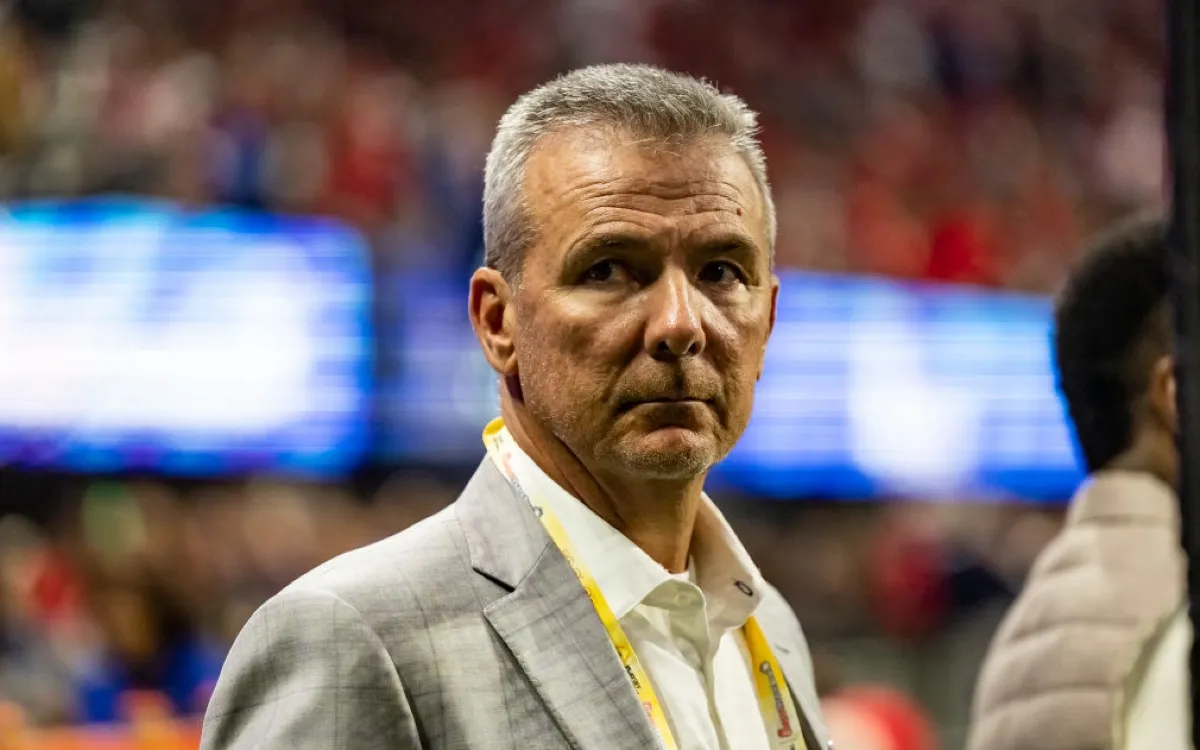
Urban Meyer, a prominent figure in college football, offers a unique insight into the divide between smaller, Group of Five schools and elite power programs. With an extensive coaching resume that includes leading teams at Bowling Green, Utah, Florida, the NFL, and Ohio State University, Meyer has experienced the spectrum of college football. His thoughts on the future of the college football landscape are particularly valuable, especially in light of recent changes.
Earlier this week, during an appearance on The Triple Option podcast with Mark Ingram and Rob Stone, Meyer expressed his worries regarding the distribution of talent across college football. He highlighted that talented players developed at smaller schools may not achieve the same success as they did in the past. “They become the feeder system for the big boys,” he stated, referring to how smaller programs are often exploited by larger schools. Despite this, he maintains that the football played in conferences like the Mid-American Conference (MAC) remains compelling, emphasizing that coaching plays a critical role when teams have similar talent levels.
The advent of the NIL (Name, Image, Likeness) era has fundamentally altered the dynamics of college football. Meyer pointed out that smaller programs now function as effective minor league systems for larger teams. For instance, if a program like Bowling Green successfully recruits and develops a promising high school athlete, it is highly likely that prominent schools such as Alabama, USC, or Michigan will soon express interest in that player. The ease of unrestricted transfers allows players to pursue better financial opportunities and greater visibility on national television, which is a compelling factor for any student or employee.
Meyer elaborated further during a second interview on the Another Dooley Noted Podcast, where he asserted that the Big Ten Conference has surpassed the SEC in terms of overall quality at the top tier of teams. “The SEC has raised the level, but the Big Ten has passed the SEC at the upper part,” he explained. This shift in paradigm is notable, especially given that the Big Ten has clinched the last two National Championships, a feat Meyer once deemed improbable.
Reflecting on his early days in the Big Ten, Meyer recalled thinking that the style of play was slower compared to other conferences. He noted, “When I first got to the Big Ten, even Shelley said, ‘What in the world? This is a slow man’s game up here,’” but he takes pride in how teams like the Buckeyes have evolved the game. He acknowledged the strides other teams have made in recruiting top talent beyond their geographical footprints, pointing out that teams like Michigan and Penn State are also experiencing significant success.
While there is a consensus that the Big Ten has made considerable progress, fans of the SEC remain skeptical. They argue that proving supremacy in college football requires more than just a couple of successful seasons; it necessitates a broader demonstration of consistent competitiveness across the conference. The intriguing question remains: how will teams like Michigan, Ohio State, Penn State, Oregon, and USC perform this season against formidable opponents such as Alabama, Georgia, Texas, Ole Miss, and South Carolina? The outcomes of these matchups will significantly influence the ongoing debate about which conference reigns supreme.